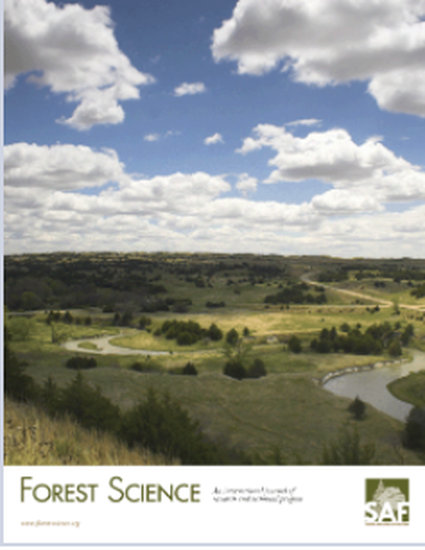
Article
Early Fruiting in Chestnut Oak (Quercus prinus L.)
Forest Science
(1983)
Abstract
During the course of studies of regeneration and productivity in Appalachian oak forest stands in southwest Virginia following clearcutting, it was observed that chestnut oak (Quercus prinus L.) stems of coppice origin first produced viable acorns in the third growing season. This was compared to a minimum of 20 years for the inception of fruiting reported in the literature. By the seventh growing season coppice stems yielded an average of about 9,100 total acorns and 6,500 sound acorns per hectare, the latter with a germinative capacity of about 93 percent. No acorns were observed on stump sprouts of scarlet oak (Q. coccinea Muenchh.) and black oak (Q. velutinaLam.) of comparable age. Likewise, advance regeneration stems of seedling and seedling-sprout origin in these same stands produced no acorns. The results of this study suggest that coppice chestnut oak stands less than 10 years of age may provide substantial numbers of acorns for regeneration at later points in time and for recolonization of adjacent areas. This early fruiting habit, coupled with the prolific sprouting capacity of chestnut oak, may help explain the dominance of chestnut oak throughout the successional sequence on dry sites in the Appalachians. Likewise, early fruiting suggests that the wildlife forage value of young chestnut oak stands may be greater than previously considered.
Disciplines
Publication Date
1983
DOI
https://doi.org/10.1093/forestscience/29.2.221
Citation Information
Terry L. Sharik. "Early Fruiting in Chestnut Oak (Quercus prinus L.)" Forest Science Vol. 29 Iss. 2 (1983) p. 221 - 224 Available at: http://works.bepress.com/terry_sharik/157/
